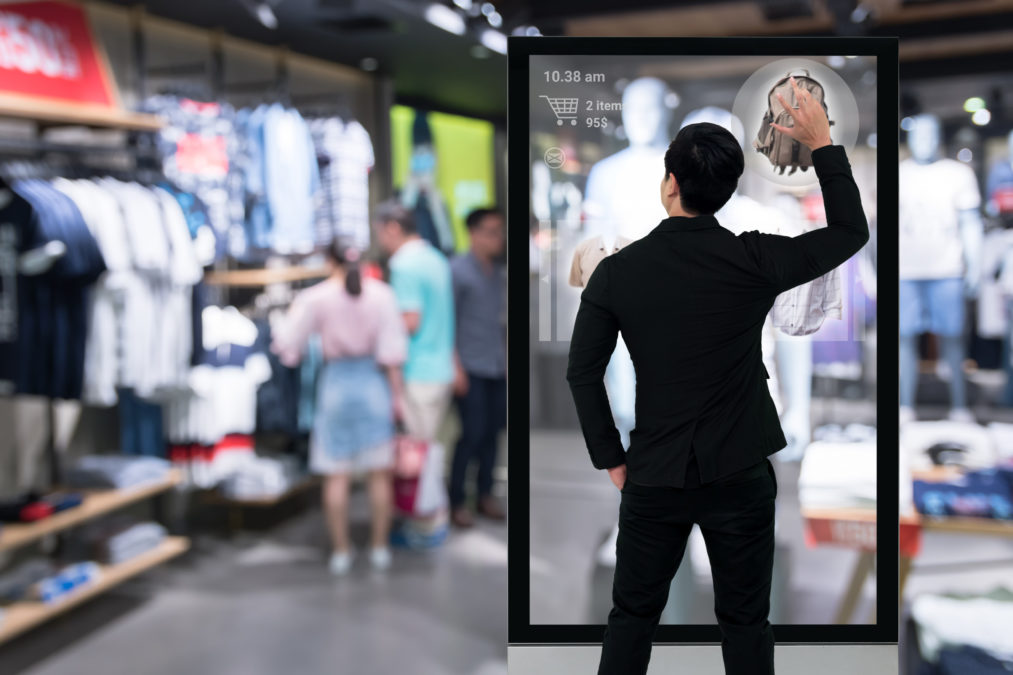Retailers, perhaps under more pressure than most — think back to all the brands, such as Woolworths, ToyRUs and HMV that have gone out of business or declared bankruptcy — need to adapt to changing consumer demands at the fastest rates. In other words, they need to digitally transform, and create hyper-personalised customer experiences.
The retail industry is in a state of constant and rapid change — “and technology is at the forefront of much of that transformation,” according to Eli Finkelshteyn, CEO and co-founder of Constructor, the AI-first search and discovery platform focused on retail and e-commerce companies.
Amazon (a technology company) and Walmart are the market leaders, while ‘specialty retailers’ (Sephora, Lowe’s, Kroger), as Finkelshteyn names them, are pursuing a range of digital technologies, such as augmented reality and smart shelves, to build durable competitive advantages.
There isn’t a single blueprint for success, and many businesses that missed out on digital transformation, including former giants Sears and ToysRUs, are bankrupt or no longer competitive.

Retail digital transformation
Consumers expect the latest technology and the best offers in the retail space. Everything has to be personalised, streamlined and overall, an enjoyable experience.
Finkelshteyn explains, “many of today’s shoppers are digital natives and have high expectations for their digital experiences. On the positive side, they’re increasingly showing that they’re willing to pay more for a better customer experience [according to the Customers 2020 report by Walker, 86% of buyers will pay more for a better customer experience].”
The negative side of this is revealed in a Riverbed Retail Digital Trends survey, which found that 39% of respondents decided to shop elsewhere after having a negative digital experience, and 38% told their family and friends. In this digital savvy society, word travels quick.
“Retailers are starting to realise how important giving the customer a tailored, personalised experience is, and those who don’t will eventually lose even their most loyal customers,” continues Finkelshteyn.
And those that do lose their most loyal customers will, well you don’t need me to explain that.
See also: Hybrid cloud for retailers: Is it the gateway to digital transformation? – The benefits of adopting hybrid cloud go beyond cost reduction and productivity gains, it’s a solid gateway to digital transformation.
Technology to save the day
As we have covered, organisations — in whatever sector, such as telecoms, marketing or food/beverage — must identify a problem, and use technology to solve it. Not get lost in a host of shiny new technologies.
That being said, there are a number of ‘shiny’ technologies that can add the much-needed personalisation retailers are striving for.
According to Finkelshteyn, a few examples include; “deep learning to augment available product data, data-driven personalisation, augmented reality to let customers try before they buy, smart shelves and voice search.
Search and discovery are obvious components of today’s online shopping experience, but innovative retailers are now using these technologies, such as in self-service kiosks that help customers find the products they’re looking for, to improve in-store experiences as well.
“A few years ago, most retailers tried hard to build their technical edge in-house, with mixed results. Now, retailers realise that much of the tech that will power the digital experiences of the future is too risky and difficult to build themselves, and many of the strongest competitors have taken a different approach.”
This is an important lesson, businesses — generally — should focus on what they’re good at and leave other aspects — such as cloud security — to vendors or suppliers.
“They’ve realised that they can build a better digital experience by focusing on deeply understanding what the most promising technologies are, then bringing in software from best-of-breed partners that rapidly let’s them test and integrate that technology and give their users a better experience faster than their competitors,” continues Finkelshteyn.
Counting the cost: How a lack of digital innovation is impacting physical retail
Early adopters
The majority of retailers have embraced the digital, and are indeed, on digital transformation journeys.
However, there are a few who stand out, in that they are embracing technologies as early adopters.
“Sephora is a company that immediately comes to mind with their augmented reality makeup app that lets users try on makeup virtually before purchasing it,” says Finkelshteyn. “Kroger, partnering with Microsoft to build in-store smart shelves is another. Yet another is Jet.com who’ve started to infuse personalisation throughout their shopping experience. And of course we can’t forget the constant innovations we see coming out of Amazon.”
Closing advice
According to Finkelshteyn:
Invest heavily in forming deep and nuanced opinions on what the most promising technologies for building the digital experiences of the future are. Then, instead of slowly building large, in-house teams to build those technologies, or partnering with large, cumbersome vendors that promise all-in-one solutions that require many months to integrate, instead find best-of-breed technology partners that can give you a lightweight integration to test your hypotheses.
No one is a digital prophet, and it’s OK to sometimes be wrong about the future of retail. The key is to come to well-informed hypotheses about what will likely work, then find partners who allow you to test those hypotheses quickly.







